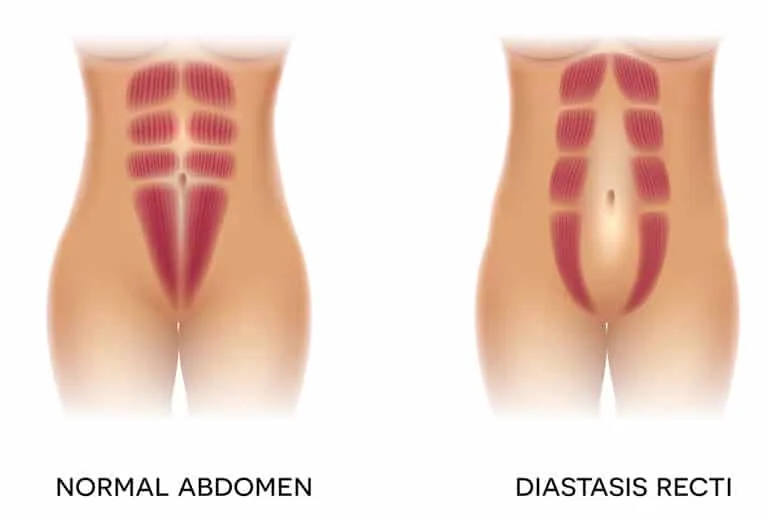This week I had my Six Week follow up after my delivery of Cooper.
Overall, I am recovering well, but it comes as no surprise that I have something in common with a lot of women at this point in my recovery…I have Diastasis Recti (DR). Even 6 weeks after my delivery, I still have a large gap in my abdominal muscles.
What Is Diastasis Recti?
This separation of the muscles in your belly is known as Diastasis Recti. Specifically, it is the separation of the “Six Pack” muscles of your abdomen, called the Rectus Abdominis.
How Does It Happen?
Diastasis Recti occurs as your body produces hormones (relaxin and estrogen) that allow the muscles and ligaments to become loose as your body begins to prepare for childbirth. As your baby grows, the connective tissues are stretched as your uterus expands, and in some cases this causes a separation at the linea alba between the muscles.
How Can I Tell If I Have Diastasis Recti?
The Physical Therapists at Thrive are trained at assessing for DR and there is also a way that you can check at home to see if you may have it. Check out the video below, as we explain how you can quickly and easily see if you have DR.
If you discover that you do have DR, contact your healthcare professional for a full assessment and treatment options.

How Common Is Diastasis Recti?
Statistics show that up to 60% of women have DR present at the 6 week point of their recovery. At 6 months, there are still 45.4% of women that have it, and a full year after their delivery, 32.6% of women still have DR present. (statistics from altmetric.com)
The thing is that many women have never heard about it, so they don’t even know they have it.
What Does It Mean For Me?
Many women notice that they have a “pooch” in their belly that they just can get rid of. This can be one of their first clues that something isn’t quite right. The separation of the muscles affects their ability to contract and results in a “pooch.”
Our core and abdominal muscles are designed to control pressure. It needs to be able to generate tension to perform lifting and other activities. It also needs to have the ability to relax to allow for normal urination and bowel movements.
Over time, this can lead to a variety of issues from back and hip pain to urinary incontinence.
What Can I Do About It?
Too often people are told that nothing can be done about it!
While you can’t repair the tissue without surgery, the condition is very manageable and most people are able to significantly improve their DR and live symptoms-free without undergoing surgery!
There are simple techniques and exercises that address the deeper core muscles that can decrease the width of the separation and improve how your muscles work.
There are also many things you can do day to day to improve your recovery.
Call Today to schedule your appointment for an assessment with one of our trained Experts!
Or ask about our Free Report on 4 Secrets to Help You Recover from Diastasis Recti!



